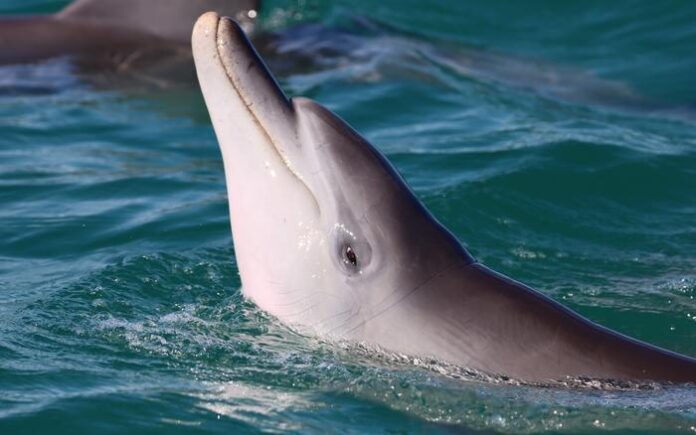For young male bottlenose dolphins, play is often practice. When that play concerns courtship, practice makes perfect. Juvenile males who spend more time play-acting courtship rituals father more offspring years later as adults, according to a study in Proceedings of the National Academy of Sciences.
Study author Livia Gerber, a researcher at University of New South Wales, Sydney, had previously published work showing that adult male alliances form when the dolphins are young. The new study says these relationships carry over into adulthood, predicting reproductive success.
“Our result suggests that males are practicing this joint action with their future allies,” says Holmes.
Dolphin Social Structure
The new study is the culmination of 28 years of observation and 32 years of genetic and other data gathered by researchers from the University of Bristol and University of Western Australia. It underscores the benefits of long-term field studies such as the ones researchers conducted at Shark Bay Dolphin Research on the westernmost point of Australia’s coast.
Picking apart and labelling different dolphin behaviors wasn’t easy, according to Kathryn Holmes, an author of the study who completed the research while completing her doctorate at the University of Bristol.
Dolphin social structure is complicated. Young dolphins play in frequently changing small groups. Sometimes the members are all the same gender. Sometimes the members are both male and female. Group members come and go.
Read More: Bottlenose Dolphins Form Alliances Similar To Humans
Dolphin Play Herding
The researchers were especially interested in play herding. In this behavior, one individual plays female, even though that dolphin could be male or female. The rest of the group takes on a male role. Both males and females can be male during this game, although biological males tend to play male more than biological females.
Dolphins assuming the male role work together to surround or flank the individual playing the female. Males attempt to make contact with the female’s body, sometimes simulating sex. The female often lays passively on their side or back while the males try to either mount the female.
“Sometimes play becomes very chaotic and there is a lot of leaping and whitewater!” says Holmes.
Read More: Much Like Humans, Dolphin Pods Have Complex Social Structures
Building Bonds
During these sessions, juveniles both form and strengthen bonds. Juvenile males who form these bonds were more likely to work together by coordinating their movements in sexually oriented play.
The researchers noticed some key differences between juvenile courtship play and actual mating behavior. For juveniles, when the herding behavior ends, they switch to other activities, like traveling, looking for food, or resting. Adult males continue herding behavior even during those other activities, for as long as several weeks.
Also, although both adult and juvenile males make popping sounds that encourage the females to stay close, the patterns of these sounds differ by age.
“Juvenile pops are structurally more erratic than adult male pops, suggesting that they need practice to achieve the adult rhythm,” Holmes says.
The study took so long because the researchers needed to follow a large enough group of dolphins from youth to adulthood.
“Given that many individuals whom we study as juveniles do not survive into adulthood, it is remarkable that we had the data to show that juvenile males who spend more time playing in the adult male play herding role father more offspring years later as adults,” says Holmes.
Read More: Yes, Animals Create Culture and Pass It Along for Survival
Article Sources
Our writers at Discovermagazine.com use peer-reviewed studies and high-quality sources for our articles, and our editors review for scientific accuracy and editorial standards. Review the sources used below for this article:
Before joining Discover Magazine, Paul Smaglik spent over 20 years as a science journalist, specializing in U.S. life science policy and global scientific career issues. He began his career in newspapers, but switched to scientific magazines. His work has appeared in publications including Science News, Science, Nature, and Scientific American.
Source : Discovermagazine













